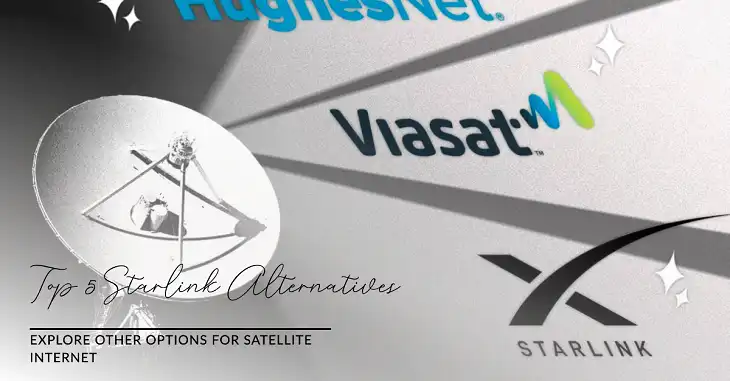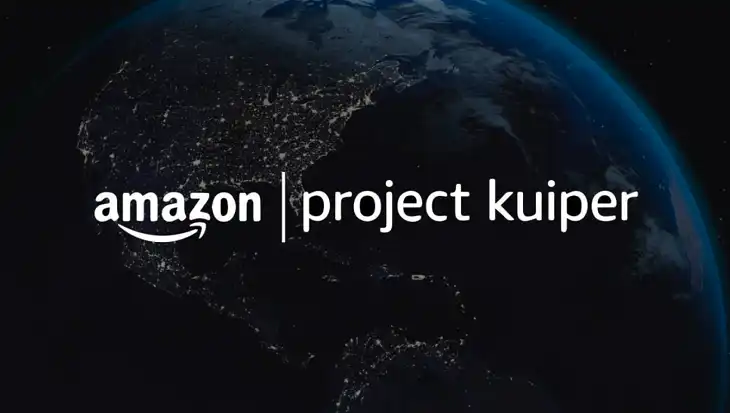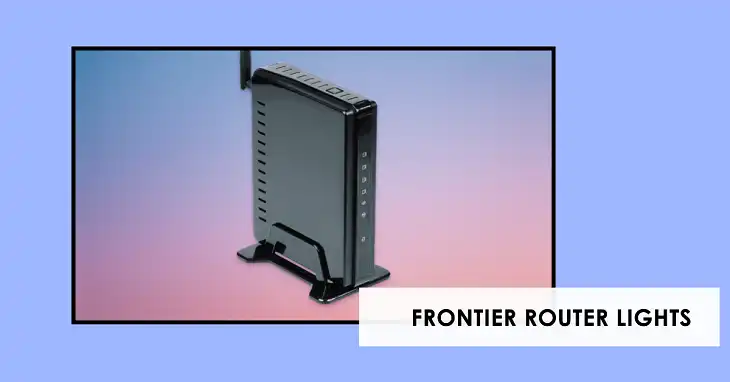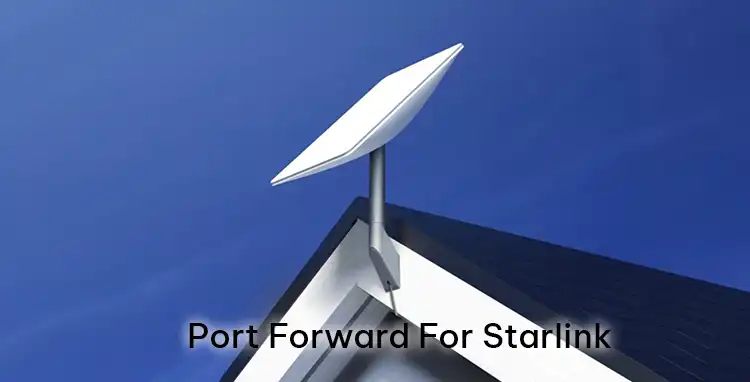Starlink Competitors: Top 5 Starlink Alternatives
Satellite internet has emerged as a game-changer, promising to bridge the digital divide and bring high-speed internet to even the most remote corners of the globe. At the forefront of this revolution is Starlink, a project by SpaceX that has captured the imagination of tech enthusiasts and rural internet users alike. However, Starlink is not alone in this cosmic internet race. This article will explore the landscape of Starlink competitors, providing you with a clear understanding of your options in the satellite internet market.

How Satellite Internet Technology Works
Before we dive into the competitors, let’s briefly explore how satellite internet works. Unlike traditional terrestrial internet connections that rely on cables and fiber optics, satellite internet beams data directly from orbiting satellites to a small dish installed at your home or business.
There are three main types of satellite orbits used for internet services:
- Low Earth Orbit (LEO): 500-2,000 km above Earth
- Medium Earth Orbit (MEO): 2,000-35,786 km above Earth
- Geostationary Earth Orbit (GEO): 35,786 km above Earth
Each orbit type has its advantages and limitations, primarily affecting latency (the time it takes for data to travel) and the number of satellites required for global coverage.
What’s Starlink
Starlink, a project by Elon Musk’s SpaceX, has revolutionized the satellite internet industry with its ambitious plan to deploy thousands of small satellites in Low Earth Orbit. This approach aims to provide high-speed, low-latency internet access to users worldwide, including areas where traditional internet infrastructure is lacking or unreliable.
Key features of Starlink:
- Vast constellation of over 4,000 satellites (as of 2024)
- Low Earth Orbit deployment for reduced latency
- Advertised speeds of 50-200 Mbps
- Global coverage ambitions
Starlink’s innovative approach has set a new standard in the industry, prompting established players and new entrants alike to reassess their strategies and technologies.
Major Starlink Competitors
While Starlink has garnered significant attention, several other companies are vying for a share of the satellite internet market. Let’s examine some of the key players:
1. OneWeb
OneWeb, a UK-based company, is one of Starlink’s most direct competitors. Like Starlink, OneWeb aims to provide global internet coverage using a constellation of Low Earth Orbit satellites.

Company background: Founded in 2012, OneWeb has faced financial challenges but has since been revived through investment from the UK government and Bharti Global.
Technology and infrastructure: OneWeb plans to deploy a constellation of 648 satellites in Low Earth Orbit.
Coverage areas: As of 2024, OneWeb is focusing on providing service to the Northern Hemisphere, with plans for global coverage.
Pricing and plans: OneWeb primarily targets business and government customers, with pricing varying based on specific needs.
Unique selling proposition: Strong focus on serving Arctic regions and maritime industries.
2. Amazon’s Project Kuiper
Project Kuiper is Amazon’s ambitious entry into the satellite internet market, leveraging the company’s vast resources and technological expertise.

Company background: Announced in 2019, Project Kuiper is part of Amazon’s strategy to expand its reach in the technology and connectivity sectors.
Technology and infrastructure: Plans to launch a constellation of 3,236 satellites in Low Earth Orbit.
Coverage areas: Aims to provide global coverage, with a focus on underserved areas.
Pricing and plans: Not yet announced as of 2024.
Unique selling proposition: Integration with Amazon’s extensive ecosystem of products and services.
3. Telesat Lightspeed
Telesat, a Canadian company with decades of experience in satellite communications, is developing its Lightspeed constellation to compete in the LEO satellite internet market.

Company background: Telesat has been a leader in satellite communications since 1969.
Technology and infrastructure: Plans for a constellation of 298 advanced satellites in Low Earth Orbit.
Coverage areas: Global coverage with a focus on rural and remote areas.
Pricing and plans: Primarily targeting enterprise and government customers.
Unique selling proposition: Leverages Telesat’s long-standing expertise in satellite operations.
4. Viasat
Viasat is an established player in the satellite internet market, known for its high-capacity satellites in Geostationary orbit.
Company background: Founded in 1986, Viasat has been providing satellite internet services for residential and commercial customers for many years.
Technology and infrastructure: Utilizes large, high-capacity satellites in Geostationary orbit.
Coverage areas: Serves North and Central America, Europe, and parts of South America and the Middle East.
Pricing and plans: Offers a range of residential plans with varying speeds and data allowances.
Unique selling proposition: High-capacity satellites capable of delivering substantial bandwidth to users.
5. HughesNet
HughesNet is one of the most well-known names in satellite internet, particularly in the United States.
Company background: Hughes Network Systems has been providing satellite internet services since the 1990s.
Technology and infrastructure: Uses Geostationary satellites for coverage.
Coverage areas: Primarily serves North and South America.
Pricing and plans: Offers a variety of residential plans with different data allowances.
Unique selling proposition: Long-standing reputation and widespread availability in rural areas.
To help you compare these major competitors, here’s a comparative table:
| Provider | Orbit Type | Planned Satellites | Global Coverage | Primary Market |
| Starlink | LEO | 42,000+ | Yes (planned) | Residential/Commercial |
| OneWeb | LEO | 648 | Yes (planned) | Business/Government |
| Project Kuiper | LEO | 3,236 | Yes (planned) | TBA |
| Telesat Lightspeed | LEO | 298 | Yes (planned) | Enterprise/Government |
| Viasat | GEO | 3 (high capacity) | Partial | Residential/Commercial |
| HughesNet | GEO | 2 (high capacity) | Partial | Residential |
This table provides a quick overview of the key differences between Starlink and its main competitors. As you can see, while Starlink plans to deploy the largest number of satellites, each provider has its unique approach to serving the satellite internet market.
In the next section, we’ll explore some of the emerging players and regional competitors in the satellite internet space, providing a more comprehensive picture of this rapidly evolving industry.
Emerging Players and Regional Competitors
While the major players dominate headlines, several emerging companies and regional initiatives are also making waves in the satellite internet market. These newcomers are introducing innovative approaches and targeting specific market segments or geographical areas.
Freedomsat
Freedomsat is a newer entrant in the satellite internet market, aiming to provide affordable and accessible internet services.
Technology approach: Utilizing a combination of LEO and MEO satellites for optimized coverage and performance.
Target market: Focusing on underserved rural areas and developing countries.
Current status: In the early stages of development, with plans to launch initial satellites by 2025.
AST SpaceMobile
AST SpaceMobile is taking a unique approach to satellite internet by aiming to provide broadband directly to standard smartphones.

Technology approach: Large, powerful satellites in LEO that can communicate directly with unmodified cellular devices.
Target market: Global, with a focus on eliminating cellular dead zones.
Current status: Successfully launched test satellite BlueWalker 3 in 2022, with plans for commercial service in the coming years.
Starlink vs. Competitors
To provide a clearer picture of how Starlink stacks up against its competitors, let’s dive into a detailed comparison of key factors that matter to consumers and businesses alike.
Coverage and Global Reach
Starlink, the frontrunner, boasts coverage in over 30 countries and targets global domination. OneWeb, centered on the Northern Hemisphere, is aggressively expanding its footprint. Amazon’s Project Kuiper aims for worldwide connectivity but is still in development. Viasat offers partial global coverage with a stronghold in North America. HughesNet primarily serves the Americas.
Speed and Latency
Here’s a comparison of advertised speeds and typical latency:
| Provider | Advertised Speed | Typical Latency |
| Starlink | 50-200 Mbps | 20-40 ms |
| OneWeb | Up to 195 Mbps | 30-50 ms |
| Viasat | 12-100 Mbps | 500-600 ms |
| HughesNet | 25 Mbps | 500-600 ms |
Note: Project Kuiper and Telesat Lightspeed have not yet published specific speed data.
Pricing Models
Satellite internet pricing varies widely. Starlink, a pioneer in the field, charges a monthly fee of $110 plus a $599 upfront cost for equipment. Viasat and HughesNet offer plans ranging from $50 to $150 per month. OneWeb, primarily targeting businesses and governments, has yet to publicly disclose its pricing. Project Kuiper and Telesat Lightspeed, still under development, have not announced their cost structures.
Equipment and Installation
Installation varies by provider. Starlink offers a DIY approach with a self-install kit including dish, router, and mounting hardware. In contrast, OneWeb, Viasat, and HughesNet require professional installation for their dish and modem equipment. OneWeb’s specific equipment needs depend on the customer’s particular use case.
Data Caps and Fair Usage Policies
Data caps vary widely. Starlink currently offers unlimited data but employs a fair use policy.
OneWeb, catering to businesses and governments, doesn’t publicly disclose data limits. Viasat imposes data caps ranging from 40GB to 300GB per month depending on the plan. HughesNet also has data caps, typically between 15GB and 75GB monthly.
Bottom Line
The satellite internet industry is in the midst of a revolution, with Starlink and its competitors racing to provide global high-speed connectivity. While Starlink has gained significant attention and market share, companies like OneWeb, Project Kuiper, and established players like Viasat and HughesNet are all working to carve out their niches in this expanding market.
As the technology continues to evolve and new players enter the field, consumers and businesses alike will benefit from increased options, improved performance, and potentially lower costs. However, challenges remain, including regulatory hurdles, environmental concerns, and the need for sustainable business models.






